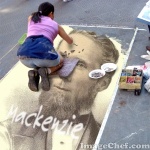 In the first half-century of the country’s history, only one Prime Minister did not have a knighthood. Alexander Mackenzie was in the fourth year of his term as PM when he and prominent Liberal, Edward Blake, were offered knighthoods. Both refused. Two years later, he and George Brown were extended the chance to become ‘Sir’. Both refused. In 1881, he turned down a knighthood for the third time.
In the first half-century of the country’s history, only one Prime Minister did not have a knighthood. Alexander Mackenzie was in the fourth year of his term as PM when he and prominent Liberal, Edward Blake, were offered knighthoods. Both refused. Two years later, he and George Brown were extended the chance to become ‘Sir’. Both refused. In 1881, he turned down a knighthood for the third time.
As an ardent Reformer, Mackenzie rejected the advantages and power of the aristocracy. Accepting a knighthood struck him as sheer hypocrisy.

